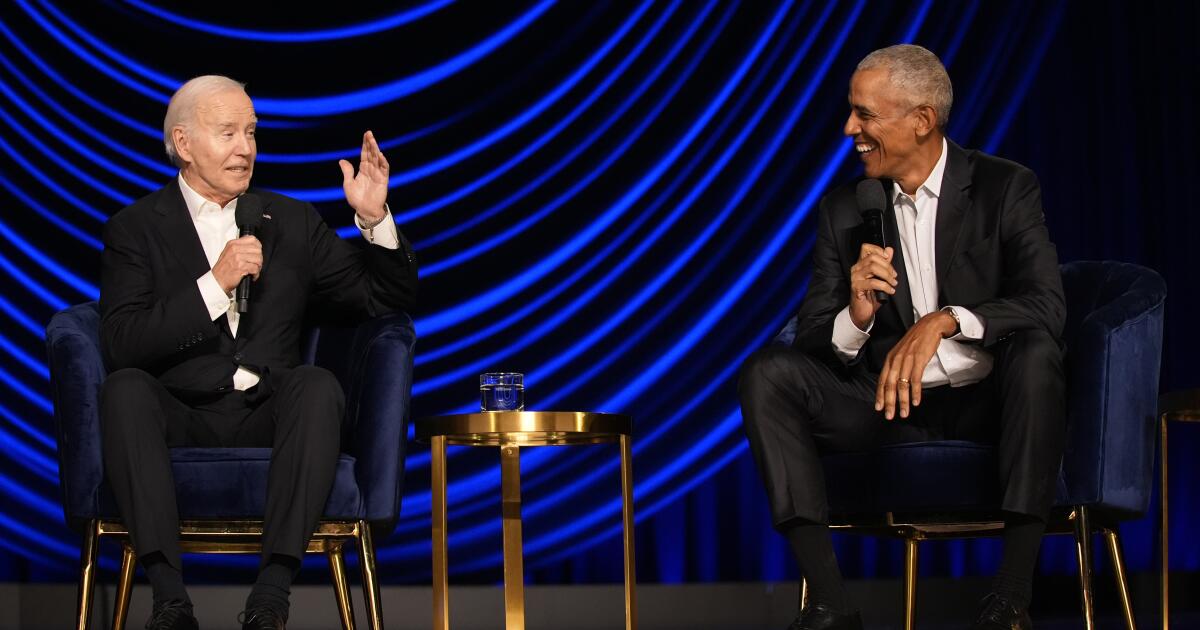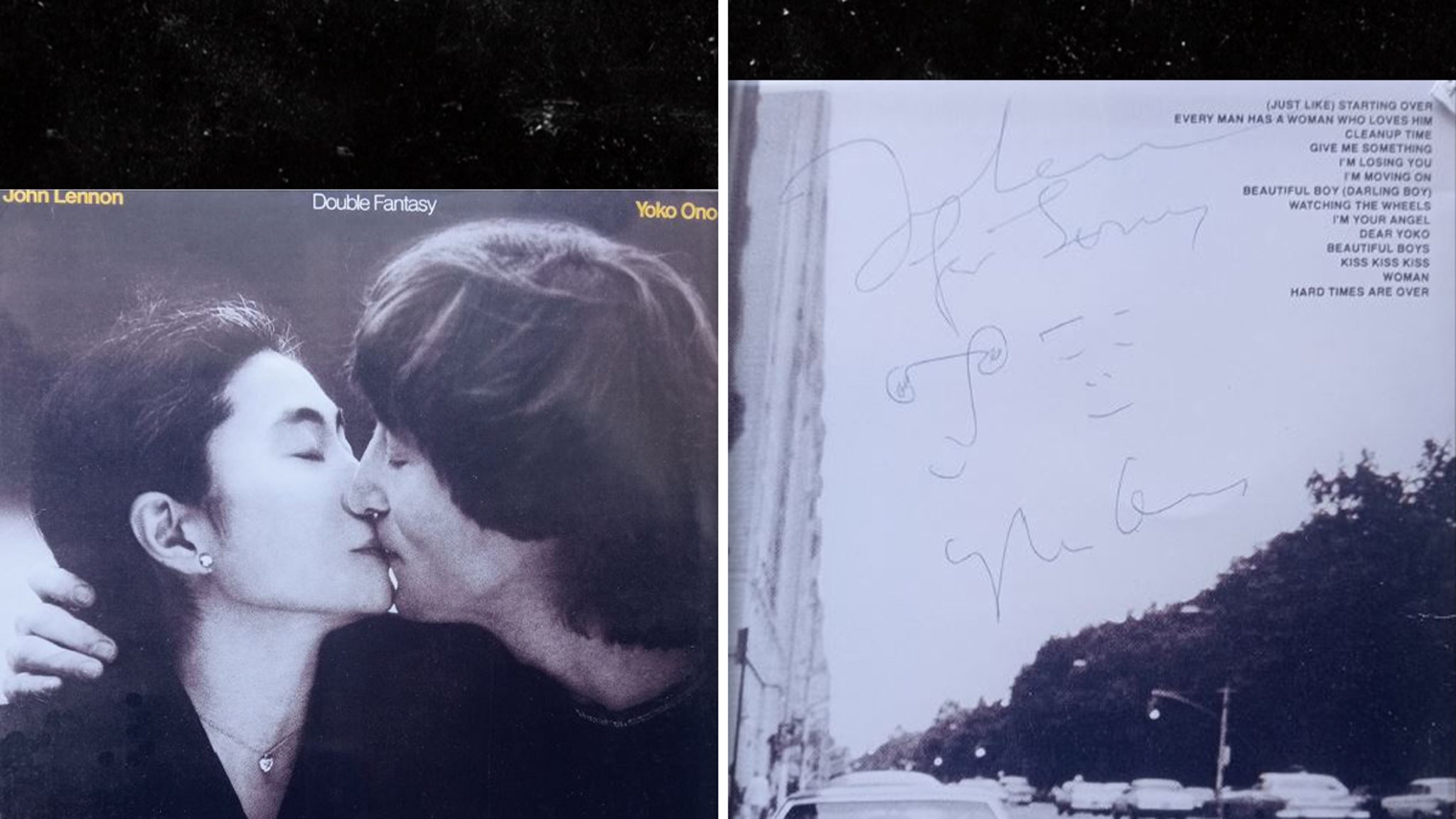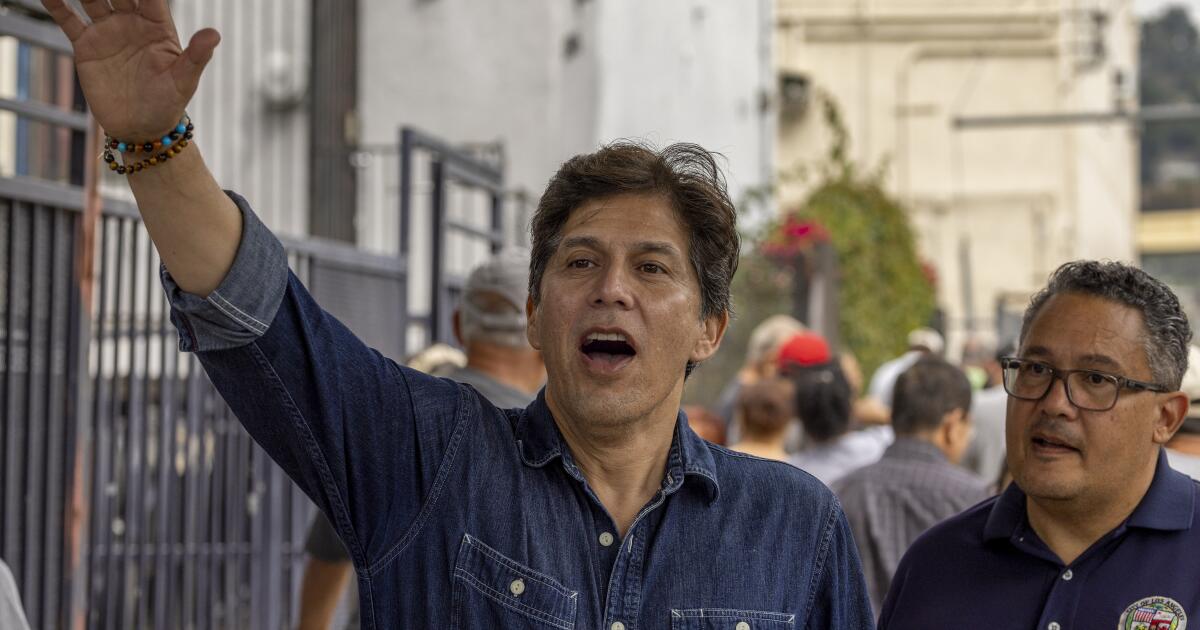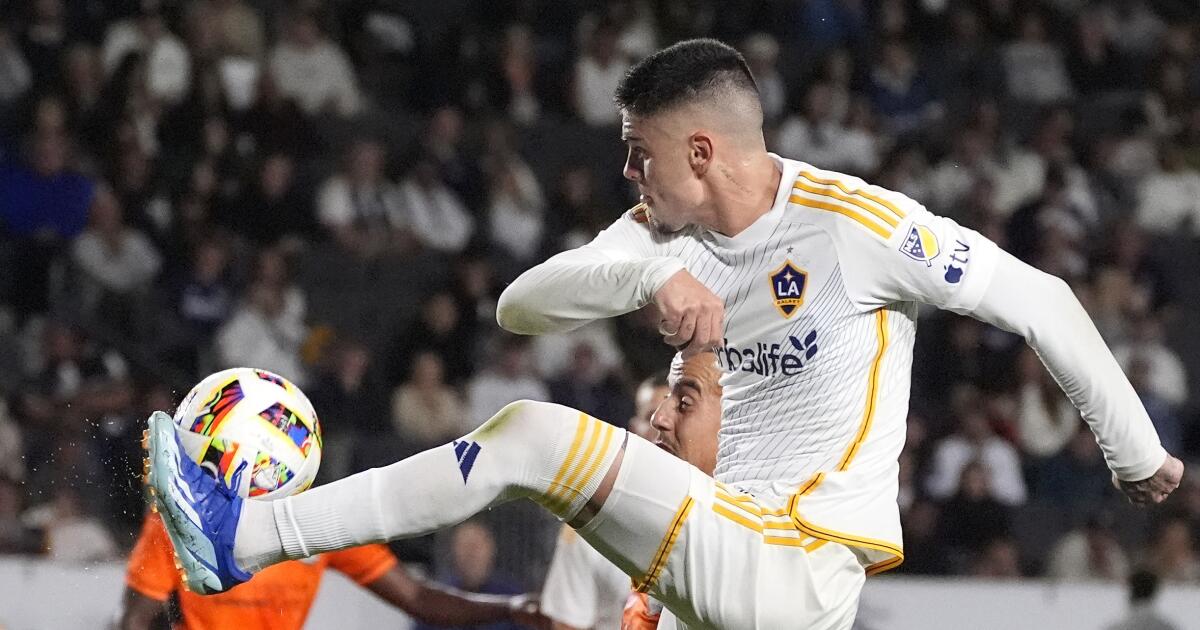World
Brazil's flooded south sees first deaths from disease, as experts warn of coming surge in fatalities
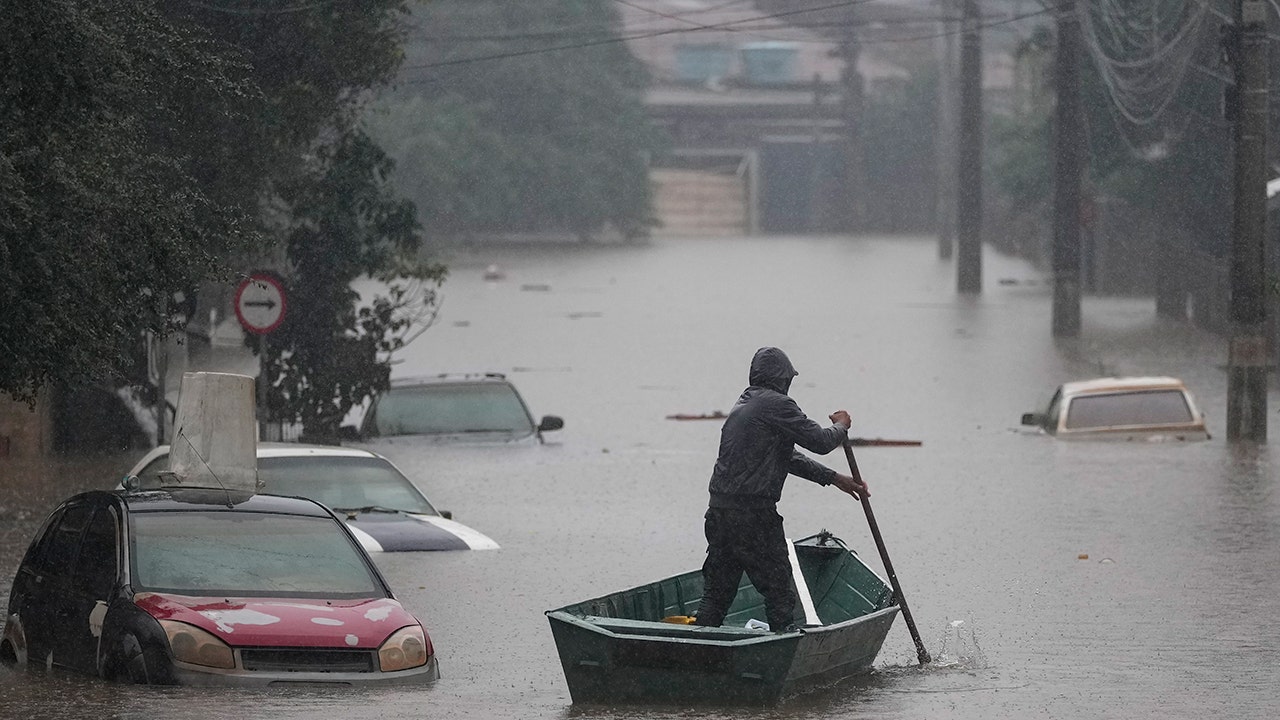
The first two deaths from waterborne bacterial disease were reported in southern Brazil, where floodwaters were slowly receding, and health authorities warned additional fatalities were likely.
Rio Grande do Sul state’s health secretariat confirmed the death of a 33-year-old man due to leptospirosis on Wednesday. On Monday, authorities registered that a 67-year-old man had died from the same infectious disease. Since the beginning of May, 29 cases of the waterborne disease have been confirmed in the state.
WATER RATIONING ORDERED AS SEVERE FLOODING DEVASTATES SOUTHERN BRAZIL
The flooding over about a two-week period killed at least 161 people, with 82 still missing, state authorities said Wednesday. More than 600,000 people were forced from their homes, including tens of thousands who remain in shelters, they said.
Health experts had previously forecast a surge in infectious diseases including leptospirosis and hepatitis B within a couple weeks of the floods, as sewage mixed into the floodwaters.
A man rows a boat on a street flooded by heavy rains, in Sao Leopoldo, Rio Grande do Sul state, Brazil, Saturday, May 11, 2024. (AP Photo/Andre Penner)
“There are those who die during the flood and there is the aftermath of the flood,” said Paulo Saldiva, a professor at the University of Sao Paulo medical school who researches the impacts of climate change in health. “The lack of potable water itself will mean that people will start using water from reservoirs that is not of good quality.”
The unprecedented disaster struck more than 80% of the state’s municipalities and damaged critical infrastructure. Over 3,000 health establishments — hospitals, pharmacies, health centers, and private clinics — were affected, according to a report from the federal government’s health research institute Fiocruz released Tuesday.
“The outbreak of leptospirosis cases was somewhat expected due to the number of people exposed to the water, as well as other diseases,” said Carlos Machado, a public health and environmental expert who Fiocruz appointed to track the flood’s impact. “We have never seen in Brazil a disaster of this size and with such a large exposed population.”
Machado said that even though infrastructure, basic control services and health services have been disrupted, the local health department is working to offer prophylaxis to infectious diseases and guidance to people returning home on how to reduce the exposure risks.
Interruption of health services can also have a lasting impact on patients treating chronic diseases, as treatment and care for chronic patients are discontinued, Machado said. People also often leave home during climate disasters without their prescriptions or identification.
“The health department is working hard to guarantee medication to patients with chronic diseases,” he said.

World
Russia-Ukraine war: List of key events, day 842

As the war enters its 842nd day, these are the main developments.
Here is the situation on Sunday, June 16, 2024.
Politics and diplomacy
- World leaders are gathering in Switzerland for the second day of a major peace conference to pursue a consensus on condemning Russia’s invasion of Ukraine and underscoring concerns about the war’s human cost.
- Ukrainian President Volodymyr Zelenskyy has voiced hope of garnering international agreement around a proposal to end the war that he could present to Moscow.
- The circle of countries participating in the process of working towards a peace plan for Ukraine should be widened, French President Emmanuel Macron said during the opening of the peace summit.
- Italian Prime Minister Giorgia Meloni described as “propaganda” Russian President Vladimir Putin’s demand that Ukraine effectively surrender before any peace talks.
- United States Vice President Kamala Harris announced another $1.5bn in assistance to Ukraine, as she pledged the US’s full support in backing Kyiv’s efforts to achieve “a just and lasting peace” in the face of the war with Russia.
- A draft of the final summit declaration reportedly refers to Russia’s invasion as a “war” – a label Moscow rejects – and calls for Ukraine’s control over the Zaporizhzhia nuclear plant and its Azov Sea ports to be restored, the Reuters news agency reported.
- White House National Security Advisor Jake Sullivan told reporters that Qatar had helped to mediate the return from Russia of 30 or more Ukrainian children to their families. Kyiv claims that as many as 20,000 children have been taken to Russia or Russian-occupied territory without the consent of family or guardians since the war began.
- More than 90 countries are taking part in the summit, but China said it would boycott the event after Russia was frozen out of the process.
Fighting
-
The peace summit comes at a perilous moment for Ukraine on the battlefield, with Russian forces advancing against outmanned and outgunned Ukrainian units.
-
Near Ukraine’s embattled eastern front, hopes for a diplomatic breakthrough are nearly nil. “I’d like to hope that it will bring some changes in the future. But, as experience shows, nothing comes of it,” Maksym, a tank commander in the Donetsk region, told the AFP news agency.
-
Outside the peace summit venue in Switzerland, the wife of a Ukrainian soldier captured by Russia said she hoped the leaders could agree to “some exchange process for the prisoners of war”. “I want to see my husband,” Hanna, who fled her home in the southern Ukrainian city of Mariupol and now lives in Sweden, told AFP.
-
Meanwhile, Russian army defectors live in fear of reprisal from Moscow after abandoning their posts in the ongoing war with Ukraine. Many also feel abandoned by the West, as they do not have the necessary passports and only have documents allowing them to reach neighbouring Kazakhstan or Armenia.
World
The Sticking Points That Kept Russia and Ukraine Apart

Russia and Ukraine failed to agree on a range of critical issues when they held peace talks in the spring of 2022. Documents from those talks obtained by The New York Times shed new light on what those issues were — and what are likely to be the main sticking points in any future negotiations to end Europe’s biggest land war in generations.
President Vladimir V. Putin had referred to the 2022 talks as a foundation for any future deal, but shifted to a harder line on Friday, demanding Ukraine cede territory that is not even under Russian control. Ukrainian and Western officials have long suspected that Russia would not be willing to settle for anything less than the full subjugation of Ukraine.
1. Ukrainian neutrality:
Will it join NATO?
Ukraine’s efforts to join the Western military alliance were at the core of Mr. Putin’s justifications for invading the country in February 2022.
Russia’s Position
Russia demanded that Ukraine never join NATO or other alliances; host foreign military bases or weapons; or conduct military exercises with other countries without its consent. In the 2022 talks, Russia pledged not to stand in the way of Ukraine’s possible membership in the European Union.
Ukraine’s Position
Ukraine offered to become a “permanently neutral state” and to “terminate international treaties and agreements that are incompatible with permanent neutrality.” But in the two years since, Ukraine’s leaders have become more vocal about seeking to join the Western military alliance as Russia’s war has continued.
2. Security guarantees:
What happens if Ukraine is attacked again?
Pledges from other countries to protect Ukraine if Russia mounts another invasion are bound to be at the center of any durable peace, some experts say.
Ukraine’s Position
Ukraine proposed a security mechanism that would be triggered “in the event of an armed attack on Ukraine.” The “guarantor” countries that signed on to the treaty would hold “urgent and immediate consultations” for no more than three days. Then, they would take “individual or joint action as may be necessary” to protect Ukraine, including establishing a no-fly zone, providing weapons and using military force.
Russia’s Position
Russia agreed to much of Ukraine’s security guarantees proposal but with key exceptions. It balked at the idea of other countries establishing a no-fly zone or providing Ukraine with weapons. Most important, Russia sought to insert a clause that would require all guarantor countries — including Russia itself — to agree on military intervention. The idea stands as perhaps the most intractable sticking point in the draft, rendering the security guarantees moot by allowing Russia to veto any international response if it invaded Ukraine again.
There was also a question: What countries would actually be willing to guarantee Ukraine’s security? The United States, the U.K., France, China and Russia itself were all listed in the draft of the treaty as guarantors. Russia also wanted to include Belarus, while Ukraine wanted to add Turkey; it’s unclear whether the countries had given their assent. If Ukraine eventually joins NATO, the Western alliance will have to deal with similarly thorny issues about how to respond if Ukraine is attacked again.
3. Territory:
How much of Ukraine would remain under Russian occupation?
For Ukraine, a peace deal would be likely to come at the expense of accepting Russian control over some part of its territory.
Ukraine’s Position
In the 2022 talks, Ukraine refused to recognize Russian control over any of the country, including Crimea, which Russia illegally annexed in 2014. But Ukraine did offer a deal in which the two countries would agree to “resolve issues related to Crimea” through 10 or 15 years of diplomacy, and would pledge to avoid doing so by “military means.”
Ukraine appeared ready to accept some swath of the country’s east also remaining under Russian occupation, with the precise contours to be hashed out in a meeting between President Volodymyr Zelensky and Mr. Putin that never came.
Mr. Zelensky’s position has since hardened. He says Ukraine is fighting to liberate all internationally recognized territory, including Crimea, under Russian control.
Russia’s Position
Russia’s stance has also fluctuated. At the outset of the 2022 negotiations, Russia demanded that Ukraine give up its entire eastern Donbas region and recognize Russian sovereignty over Crimea. By April, Russia had accepted a model in which Crimea and some other parts of Ukraine would remain under Russian occupation that Ukraine would not recognize as being legal.
Now, however, Russia’s territorial demands appear more extreme. In September 2022, Mr. Putin declared four Ukrainian regions, in addition to Crimea, to be part of Russia, even though Ukraine still controlled much of that territory. On Friday, Mr. Putin went further than in the past, declaring that any ceasefire would be contingent on Ukraine ceding all four regions to Russia, none of which Russia fully controls.
4. How would a cease-fire work?
The logistics of how to put a truce into effect are likely to pose one of the most difficult challenges of any negotiations.
Russia’s Position
An annex to the April 2022 draft added by Russia’s negotiators spelled out how Moscow saw a cease-fire taking hold. They said it would begin when the treaty was “provisionally applied” — defined as the day it was signed by Ukraine and most of the guarantor countries, including Russia. Both sides would not “carry out actions that could lead to the expansion of the territory controlled by them or cause a resumption of hostilities.”
Under Russia’s proposed terms, Moscow’s troops would have more flexibility in withdrawing from the battlefield. While Ukraine would be required to withdraw immediately, Russia’s withdrawal would be the subject of separate “consultations.”
International organizations could also be involved. Russia proposed that the United Nations monitor the cease-fire and that the Red Cross participate in the exchange of prisoners of war, interned civilians and the remains of the dead.
Ukraine’s Position
The April 2022 draft shows that Ukraine rejected Russia’s proposal but does not show a Ukrainian counteroffer. Instead, Ukrainian officials pointed out that Russia could stop fighting at any time. A note inserted by Ukrainian officials into the March 2022 treaty draft says: “The Russian side has ignored Ukraine’s numerous requests for a ceasefire.”
5. Ukrainian national identity
When Mr. Putin announced his invasion on Feb. 24, 2022, he described one of his goals as the “denazification” of Ukraine. The term was widely interpreted as referring to the Kremlin’s goal of toppling Mr. Zelensky’s government and replacing it with a puppet regime.
Russia’s Position
But Russia’s definition of “denazification” shifted quickly after its initial invasion failed. Negotiators for Moscow wanted Russian to be declared an official language and laws promoting Ukrainian language and identity to be repealed. They inserted two annexes into the draft treaty listing the articles of the legal code and Ukrainian Constitution that they wanted repealed, referring to some of them as laws on “nazification and heroization of Nazism.”
Ukraine’s Position
Ukraine balked at including any of Russia’s demands in a deal to end the war, arguing that they were “not related to the subject matter of the treaty.”
6. Limits on Ukraine’s military
Mr. Putin also called for Ukraine’s “demilitarization” when he announced his invasion, like “denazification” an ill-defined term.
Russia’s Position
Russia sought caps on the size of Ukraine’s military, including its total strength (up to 100,000 people), and the quantity of different types of weapons it would have — 147 mortars and 10 combat helicopters, for example. It also wanted the firing range of Ukraine’s missiles to be restricted to just 25 miles.
Ukraine’s Position
In the 2022 talks, Ukraine was willing to accept caps on the size of its military, but much higher ones. It sought an army of up to 250,000 people, 1,080 mortars and 60 combat helicopters. And it offered to restrict the range of its missiles to 174 miles. But that was before Ukraine began to receive significant amounts of arms, equipment and training from the West. Ukrainian officials point out that Ukraine’s military is now one of the most powerful in Europe, and it is unlikely that they would accept limits on the country’s ability to defend itself.
Original documents
To omit identifying markings, these documents have been retyped to resemble the originals. Typographical errors in the original documents have been retained.
March 17, 2022, treaty draft An early draft of a Ukraine-Russia treaty. The document is an English translation that Ukraine provided to Western governments at the time. [English]
March 29, 2022, Istanbul Communiqué The proposed agreement that was discussed at in-person talks in Istanbul, as summarized by Ukrainian negotiators. [English translation] [Russian original]
April 15, 2022, treaty draft A later draft of a Ukraine-Russia treaty. The document’s header shows this was a version that landed on President Vladimir Putin’s desk. The map referred to as Annex 6 is not included. [English translation] [Russian original]
World
Italian PM Meloni gives France's Macron 'death stare' after clash over G-7 statement
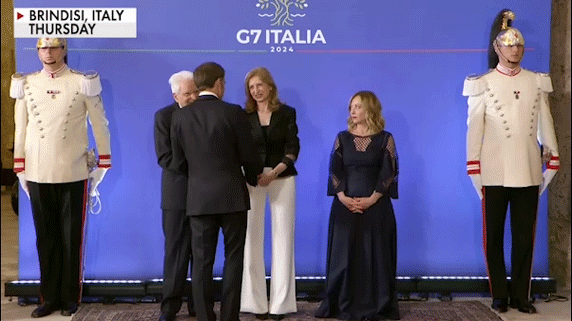
A video has gone viral showing Italian Prime Minister Giorgia Meloni looking not too thrilled about shaking the hand of French President Emmanuel Macron during the G-7 summit in Italy.
The video clip from Friday shows Macron going down a line, shaking the hands of Italian President Sergio Mattarella and his daughter, First Lady of Italy Laura Mattarella, before arriving at Meloni.
French President Emmanuel Macron, left, listens to Italian Prime Minister Giorgia Meloni in a working session with world leaders during a G-7 summit at Borgo Egnazia, Italy, on Thursday. (AP Photo/Andrew Medichini)
As Macron makes his way down the line, Meloni can be seen giving a frosty “death stare” at Macron. When the French leader arrives, she appears to force a smile as the two shake hands.
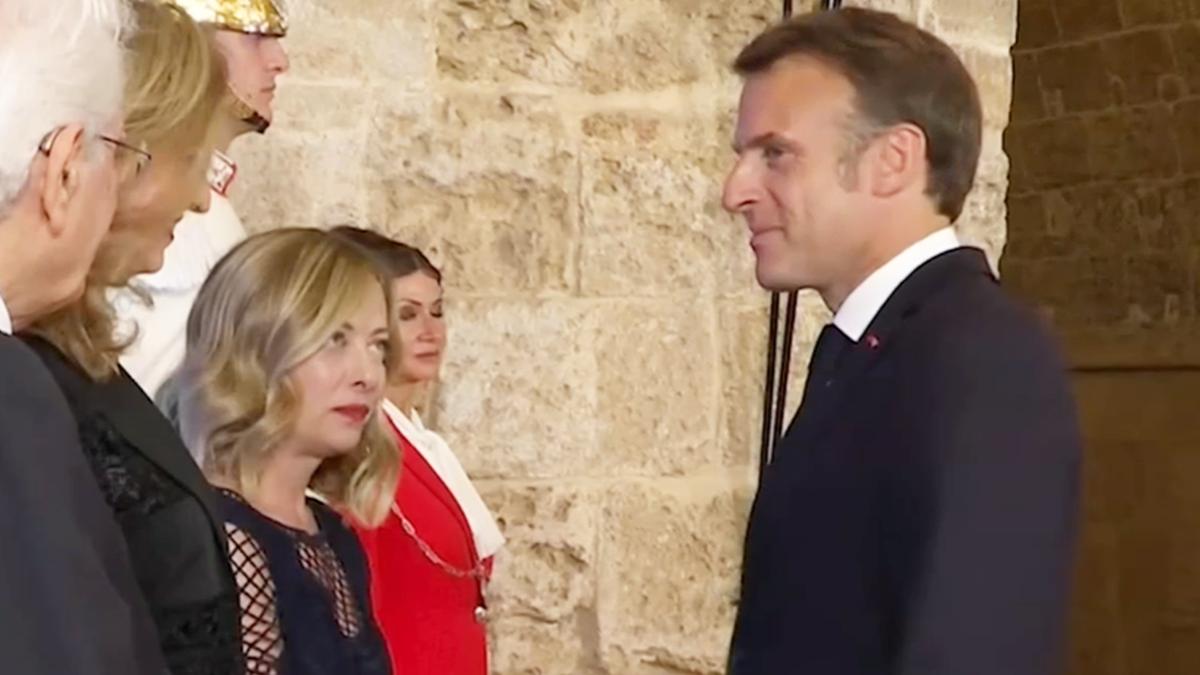
Italian Prime Minister Giorgia Meloni stares at French President Emmanuel Macron after shaking hands at the G-7 summit. (Fox News Digital)
The exchange came after the two leaders clashed over the use of the word “abortion” in the G-7 statement. Meloni’s government had sought to water down references to abortion in the final statement issued by all the G-7 nations at the end of the summit.
SPOTLIGHT ON ITALY’S MELONI AS SHE HOSTS BIDEN, G-7 LEADERS AMID ONGOING GLOBAL CRISIS
The final statement, released Friday, omits the word “abortion” but does reference the need to promote “reproductive health and rights.”
Macron said that he regretted the decision, telling an Italian reporter on Thursday, “It’s not a vision that’s shared across all the political spectrum.”
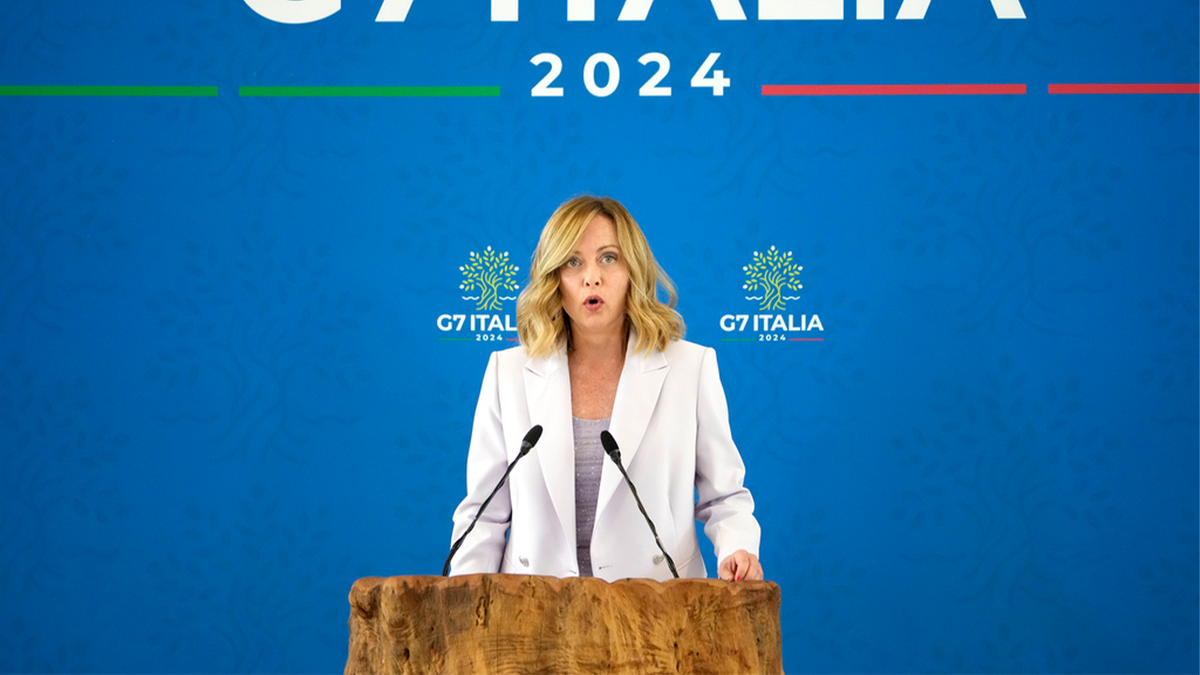
Italian Prime Minister Giorgia Meloni speaks during a final media conference at the G-7 in Borgo Egnazia, near Bari in southern Italy, on Saturday. (AP Photo/Andrew Medichini)
“I regret it, but I respect it because it was the sovereign choice of your people,” Macron said.
Meloni told reporters Saturday that a suspected row with Macron had been blown out of proportion.
Meloni, who in 2022 became Italy’s first female Prime Minister, campaigned with the slogan of “God, fatherland, and family.” She has prioritized encouraging women to have babies to reverse Italy’s demographic crisis.
Italy legalized abortion in 1978, and Meloni has promised she won’t roll back the law.
Fox News Digital has reached out to Meloni’s office for comment.
The Associated Press contributed to this report.
-

 News1 week ago
News1 week agoIsrael used a U.S.-made bomb in a deadly U.N. school strike in Gaza
-

 Movie Reviews1 week ago
Movie Reviews1 week agoShort Film Review: Blue and White (2022) by Hiroyuki Nishiyama
-

 World1 week ago
World1 week agoFrance to provide Ukraine with its Mirage combat aircraft
-

 World1 week ago
World1 week agoWorld leaders, veterans mark D-Day’s 80th anniversary in France
-

 World1 week ago
World1 week agoRussia-Ukraine war: List of key events, day 833
-

 News1 week ago
News1 week agoNonprofit CFO Accused of 'Simply Astonishing' Fraud
-

 Movie Reviews1 week ago
Movie Reviews1 week agoInsane Like Me? – Review | Vampire Horror Movie | Heaven of Horror
-

 Politics1 week ago
Politics1 week agoGeorge Clooney called White House to complain about Biden’s criticism of ICC and defend wife’s work: report
